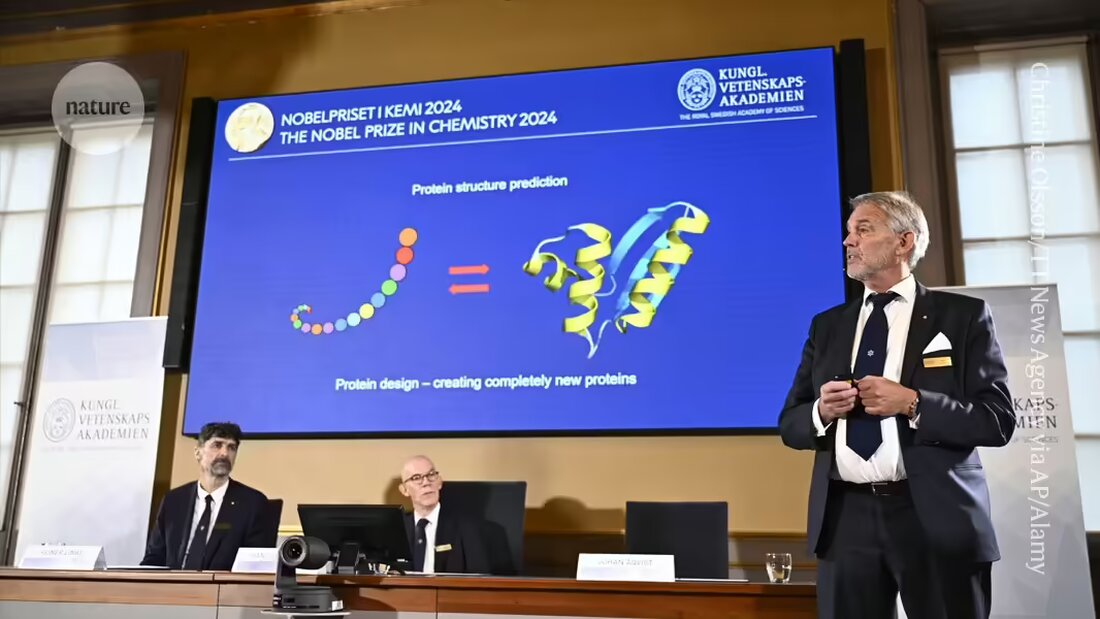AI at the Nobel Prizes: Double victory sparks discussion about scientific disciplines
The 2024 Nobel Prizes celebrate the transformative role of AI in physics and chemistry while debating the boundaries between the fields.

AI at the Nobel Prizes: Double victory sparks discussion about scientific disciplines
The Nobel Committee has recognized the transformative power of artificial intelligence (AI) in two of this year's prizes - they honored Pioneers of Neural Networks in Physics Prize and the Developer of computational tools for studying and designing proteins in chemistry prize. But not all researchers are satisfied.
Just moments after the Royal Swedish Academy of Sciences announced the winners of this year's Nobel Prize in Physics, the social media world experienced a flash of discussion. Several physicists argued that the science underlying machine learning research celebrated in the awards for Geoffrey Hinton and John Hopfield was not actually physics.
"I'm speechless. I value machine learning and artificial neural networks as much as anyone, but it's hard to see that this is a physics discovery," wrote Jonathan Pritchard, an astrophysicist at Imperial College London, on X. “I guess the Nobel Prize was hit by the AI hype.”
The research by Hinton at the University of Toronto in Canada and Hopfield at Princeton University in New Jersey "belongs in the field of computer science," says Sabine Hossenfelder, a physicist at the Munich Center for Mathematical Philosophy in Germany. "The annual Nobel Prize is a rare opportunity for physics - and physicists - to step into the spotlight. It's the day when friends and family remember that they know a physicist and maybe ask what that last Nobel Prize was about. But not this year."
Combining some perspectives
Not everyone was alarmed, however: many physicists welcomed the news. “Hopfield and Hinton’s research was interdisciplinary, bringing together physics, mathematics, computer science and neuroscience,” says Matt Strassler, a theoretical physicist at Harvard University in Cambridge, Massachusetts. “In that sense, it belongs to all of these disciplines.”
Anil Ananthaswamy, a science journalist from Berkeley, California, and author of "Why Machines Learn," notes that while the research cited by the Nobel Committee is not theoretical physics in the purest sense, it is rooted in techniques and concepts from physics, such as energy. The “Boltzmann networks” and the Hopfield networks invented by Hinton “are both energy-driven models,” he says.
The connection to physics became weaker in the later developments of machine learning, Ananthaswamy adds, particularly in the “feedforward” techniques that made neural networks easier to train. Still, physical ideas are coming back and helping researchers understand why increasingly complex deep learning systems do what they do. “We need the mindset of physics to study machine learning,” says Lenka Zdeborová, who researches the statistical physics of computation at the Swiss Federal Institute of Technology in Lausanne (EPFL).
“I think that the Nobel Prize in Physics should continue to penetrate more and more areas of physical knowledge,” says Giorgio Parisi, a physicist at Sapienza University of Rome shared the 2021 Nobel Prize. “Physics is becoming increasingly broader and includes many areas of knowledge that did not exist or were not part of physics in the past.”
Not just AI
Computer science appeared to take over the Nobel Prize the day after the physics prize was announced, when Demis Hassabis and John Jumper, co-founders of the AI tools for protein structure prediction AlphaFold at Google DeepMind in London, who won half of the Nobel Prize in Chemistry. (The other half was awarded to David Baker of the University of Washington in Seattle for work on protein design that did not use machine learning).
The prize was a recognition of the disruptive power of AI, but also of the steady increase in knowledge in structural and computational biology, says David Jones, a bioinformatician at University College London who worked with DeepMind on the first version of AlphaFold. “I don’t think AlphaFold represents a radical shift in the underlying science that wasn’t already there,” he says. “It’s all about how everything was put together and designed to allow AlphaFold to reach these heights.”
A key input that AlphaFold uses are the sequences of related proteins from different organisms, which can identify pairs of amino acids that are likely to have co-evolved and therefore may be in physical proximity in a protein's 3D structure. Researchers were already using this insight to predict protein structures when AlphaFold was developed, and some even began implementing the idea in deep learning networks.
“It wasn’t just a case of us going to work, hitting the AI button, and then everyone going home,” Jumper said at a press conference at DeepMind on Oct. 9. “It was really an iterative process where we developed, did research, and tried to find the right combinations between what the community understood about proteins and how we could incorporate those intuitions into our architecture.”
AlphaFold would also not have been possible without the Protein Database, a freely accessible repository of more than 200,000 protein structures - including some that have contributed to previous Nobel Prizes - determined using X-ray crystallography, cryo-electron microscopy and other experimental methods. “Every data point is the result of someone’s years of effort,” Jumper said.
Since their founding in 1901, the Nobel Prizes have often been a reflection of the impact of research on society and have rewarded practical inventions, not just pure science. In this regard, 2024 prices are not outliers, says Ananthaswamy. "Sometimes they are awarded for very good engineering projects. These include the prizes for Laser and PCR.”

 Suche
Suche
 Mein Konto
Mein Konto
